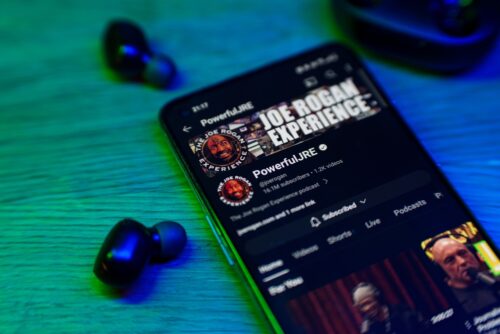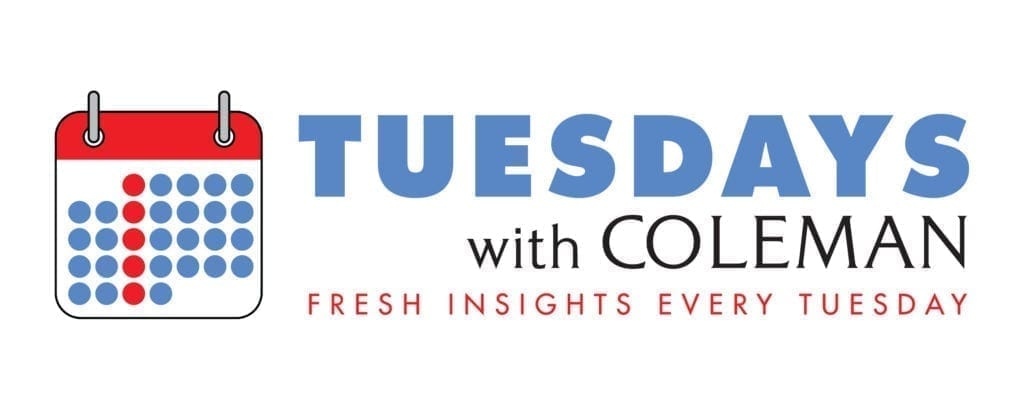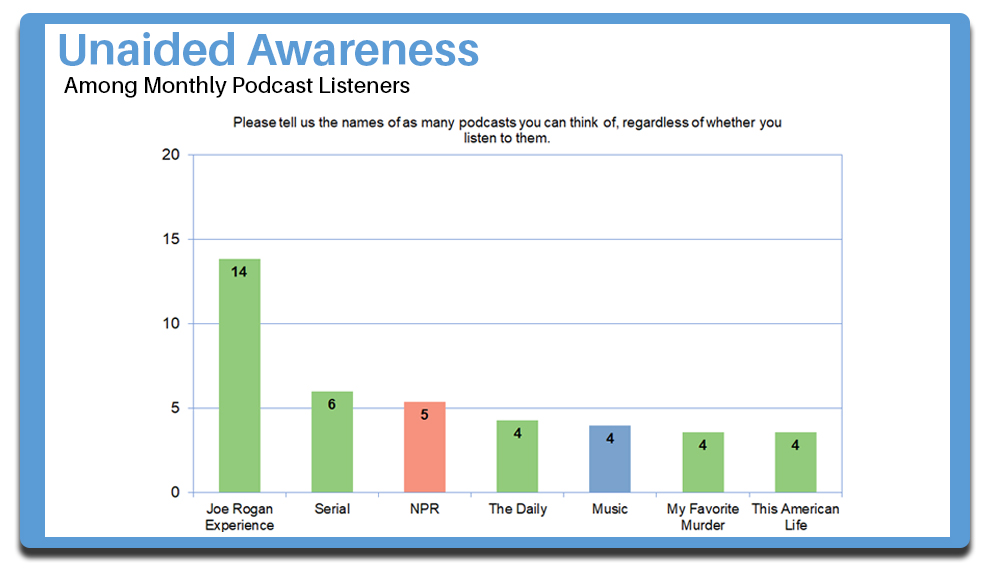
The top shelf of podcasting is a tough nut to crack.
To say there is “Joe Rogan and everyone else” is an oversimplification, but rooted in reality. When we ask podcast consumers in our research which shows are top-of-mind, whether or not they watch or listen, Rogan’s lead is astronomical. This has generally translated into massive consumption numbers, and Rogan’s early adoption of YouTube (the Joe Rogan Experience debuted in 2009), where his podcast boasts nearly 20 million subscribers, certainly has a lot to do with it.

Joe Rogan is the dominant brand in podcasting (Photo credit: Rokas Tenys / Shutterstock.com)
Newcomers have made dents, among them motivational speaker Mel Robbins, whose just over two-year-old show recently overtook Rogan as the #1 podcast on Spotify.
Some of the stalwarts of the space have approached video in different ways. NPR’s “NPR News Now” is on YouTube with a podcast that feels like watching a news story. Meanwhile, “The Daily” from The New York Times uses only a static image while playing the audio version underneath.
But several of the newer players in podcasting’s elite level have figured this video thing out.
Kylie Kelce’s “Not Gonna Lie” is only 10 episodes in and claims hundreds of thousands of views per show. Other podcasts that have been around awhile, like Alex Cooper’s “Call Her Daddy” (which boasts that it’s the top podcast among women) and Steven Bartlett’s interview formatted “The Diary of a CEO” are surging as YouTube’s popularity grows among podcast consumers.
And without YouTube, would the Hawk Tuah girl be one of the most popular podcasters?
I know you need to read that last sentence again. Take your time.
Hailey Welch was working at a bedspring factory in Nashville last summer when she was spontaneously interviewed on the street in the city’s rowdy Broadway district for a YouTube channel, Tim & Dee TV. While the questions started relatively tame, it was Welch that encouraged the hosts to “spice up the questions.” That led to “What’s one move in bed that makes a man go crazy every time?” Welch’s answer became an internet meme, forever labeling her the Hawk Tuah girl.
And that 15 minutes of fame could have been the end of the story as it so often is, but it was not.
Bloomberg podcast reporter Ashley Carman describes Welch’s remarkable six-month ascent from unknown to podcast celebrity. Someone in a position of influence had to notice (Jake Paul) and a platform had to offer backing (Paul’s Betr company), but the article mentions key points of strategy that led to Welch’s success.
According to David Tishelman, Head of Production at Betr Media, Welch is “entirely authentic and doesn’t know how to fake it. In our experience, those are the characters that resonate.” The team wisely deployed a social media strategy loaded with clips to emphasize Welch’s charming small-town origins.
In the last quarter, “Talk Tuah” was the 11th most popular podcast in the United States, according to Edison Research. It boasted nearly 12 million views on YouTube and 1.3 million unique listens on Spotify.
We’ll be releasing findings from a brand new study about video podcasting in the coming weeks. The study includes the effects of consumer usage of video and audio podcasting and how they complement (or don’t complement) each other.
So that’s where this blog should end. New talent discovered, coached, marketed properly, video used effectively, bam. But it doesn’t.
Strangely, there have been no new episodes since December 3rd. OK, not so strangely. The next day, after an episode quite timely titled “How to Avoid Getting Cancelled,” she launched a controversial meme coin that sunk in value and brought claims of a fraudulent scheme and lawsuits.
Just as you can grow a brand, you can torpedo one, too.
Maybe time will heal, and Welch will be back, or maybe we’ll never hear from her again. Either way, the lesson is the same.
Fresh talent that understands how to connect with consumers where they are is a very good thing for podcasting.
And maybe don’t launch a meme coin.


